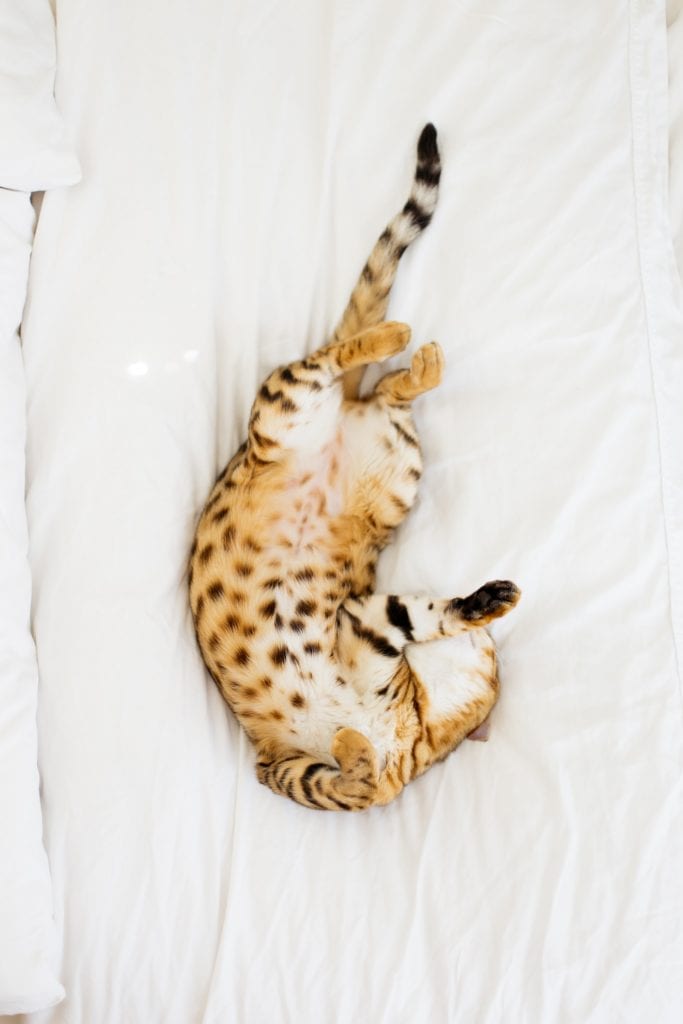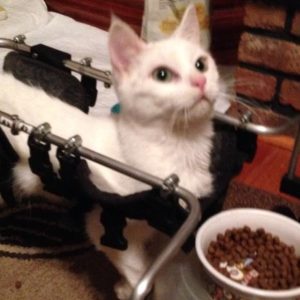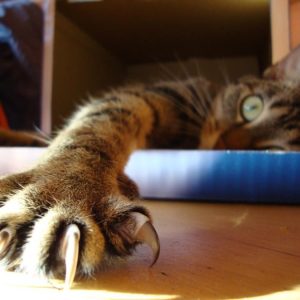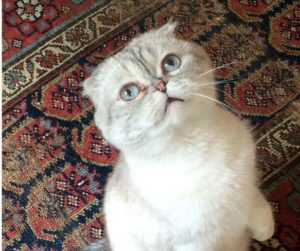Unlike their canine companions, cats don’t appreciate having their bellies touched. However, now and then, you catch a rare glimpse of the feline tummy. And – depending on fur length – you might catch a glimpse of tiny pimple-like bumps on your cat’s abdomen. They’re easier to see on hairless cat breeds, it’s true, but you can pick them out on some kitty tummies. While not very prominent, you know they have to be nipples. Then you start to wonder: are there nipples on male cats? You know attempting to take a peek could mean a scratch or bite. Lucky for you, we have the answers. So let your handsome boy relax (and leave the Band-Aids in the cabinet)
Nipples on Male Cats: The Shocking Truth
Just like dogs, humans, and other mammals, you’ll find nipples on male cats. They’re not the easiest structures to see, especially if you have one of the fluffier cat breeds out there. But if you have an obliging feline, you can run your fingers along the belly and feel tiny bumps running in two symmetrical rows from the groin up the stomach. The nipples aren’t much larger than a pimple – even in a non-pregnant female cat. Most cats have anywhere from 4-10 nipples, but that isn’t a hard and fast rule. You CAN find odd numbers – and cats within the same litter will have different nipple counts.
The number is high to reflect the litter size cats can produce. To feed all of the kittens, a mother cat needs that many nipples. It’s a common pattern in mammals. Seals and sea lions have two nipples, and they give birth to 1-2 pups at the most. Like cats and dogs, rats have between 6-10 nipples, and they can have up to 10 rats per litter (or more). That doesn’t mean you should count your mommy cat’s nipples and think the litter will be that size, though. Nature doesn’t work that way. The number of nipples is simply the genetic blueprint. If you want to know how many kittens are in the potential litter, you need to go to the vet for a radiograph (X-ray).
Nipples on Male Cats: Why?
But why are there nipples on male cats? They’re not functional. If they can’t provide milk to kittens, then why are they there? It seems silly that evolution would keep around something “decorative.” As it turns out, evolution IS at work, but not quite in the way most people think.
In utero, all mammals start identical. And the genetic blueprint has instructions to build nipples. This is BEFORE a kitten becomes male or female. For whatever reason, nipples are easy to make. Once testosterone (a male hormone) enters the system, the development of the mammary gland STOPS. However, the nipple on the male cat remains (since that started first in development). This is known as a vestigial structure.
Vestigial structures don’t require excess energy for the body to produce but also don’t convey any advantage. It would require MORE work for the DNA code to remove nipples on male cats. Instead, the genes leave them alone. This is the same reason you’ll find small pelvic bones in whales. Now, whales gave up their hind legs ages ago, and they’re not planning to return to land any time soon. But those pelvic bones aren’t hurting anything, so they stick around. Same idea with nipples on male cats. If evolution decides it’s more work to REMOVE something, it ignores them.

Can Nipples on Male Cats Function?
Is there ANY time when nipples on male cats WILL function? After all, plenty of cat breeders will see the father cat participating in the rearing of the kittens. Sometimes he’ll even nestle down in the nesting box. Does that mean he’s able to feed the kittens?
Unfortunately, it doesn’t work that way. Because testosterone interrupts the development of mammary tissue, male cats lack the necessary structures to produce milk. However, that doesn’t stop a daddy cat from offering comfort to the kittens. And to a kitten (especially a kitten whose eyes haven’t opened yet), a nipple is a nipple. The suckling sensation, whether it produces milk or not, is soothing to kittens. Nipples on male cats act as a kind of pacifier. And if the father’s comfortable, he may allow the behavior without complaint. This gives the mother a break from her clamoring young.
It’s important to remember, though, the kittens DON’T receive nourishment in the process. RARELY, you may see some lactation occur. The constant massage CAN produce milk. It requires A LOT of massage, though, and the milk produced won’t provide enough sustenance. So while you can marvel over your daddy cat’s parenting skills, you do not see functional nipples.
Problems with Male Cat Nipples
Odds are you have a standard male cat with ordinary male cat nipples. Does that mean you can ignore them? Not quite. Nipples on male cats CAN lead to health problems. They’re not as common as in female cats (especially unspayed female cats), but they’re also not unheard of. So while you may need to don protective hand-wear to check those tiny bumps, you still need to keep an eye out for changes.
Lactation
If you don’t have a father cat, you shouldn’t see swollen or lactating nipples on male cats. Odds are, this would alarm you in the first place. But if you’re marveling over your rarity, you need to stop bragging on Instagram and call the vet. Neither situation is normal.
Most swellings are related to injuries. But if you see swollen nipples along the entire mammary chain, you need to worry. And when it comes to seeing lactation, you have a real concern. The most common cause is the presence of female hormones – usually from YOU. Female therapy replacement creams can produce lactation in nipples on male cats. If they ingest the cream by licking it from your skin, it can introduce sufficient estrogen levels into their system to cause lactation. You need to contact your vet right away.
Breast Cancer
Mammary cancer is related to estrogen and progesterone. So while it’s not the top of the list, breast cancer CAN strike male cats (the average is 1%). The biggest symptom is swollen nipples in the male cat, but you can also see:
- Wounds or bleeding around the nipples
- Foul discharge from the nipple
- Nipples hot to the touch
- Excessive grooming around the nipple
- Lethargy
- Loss of appetite
If you see any changes in the nipples on male cats, you need to contact the vet. Even if you’re not dealing with breast cancer, you clearly have a problem that needs to get addressed.
“Teats on a Tom”
Okay, so nipples on a male cat aren’t the most useful things in the world. It doesn’t mean they aren’t there. And while you may not always get the best glimpse of them, you DO need to pay attention to changes in your cat’s nipples. Male cats CAN develop health problems that may end up serious. You don’t want to take that risk.
So grit your teeth, find a nice distracting toy, and run your fingers over that soft tummy. You won’t regret it (eventually).













No comment yet, add your voice below!